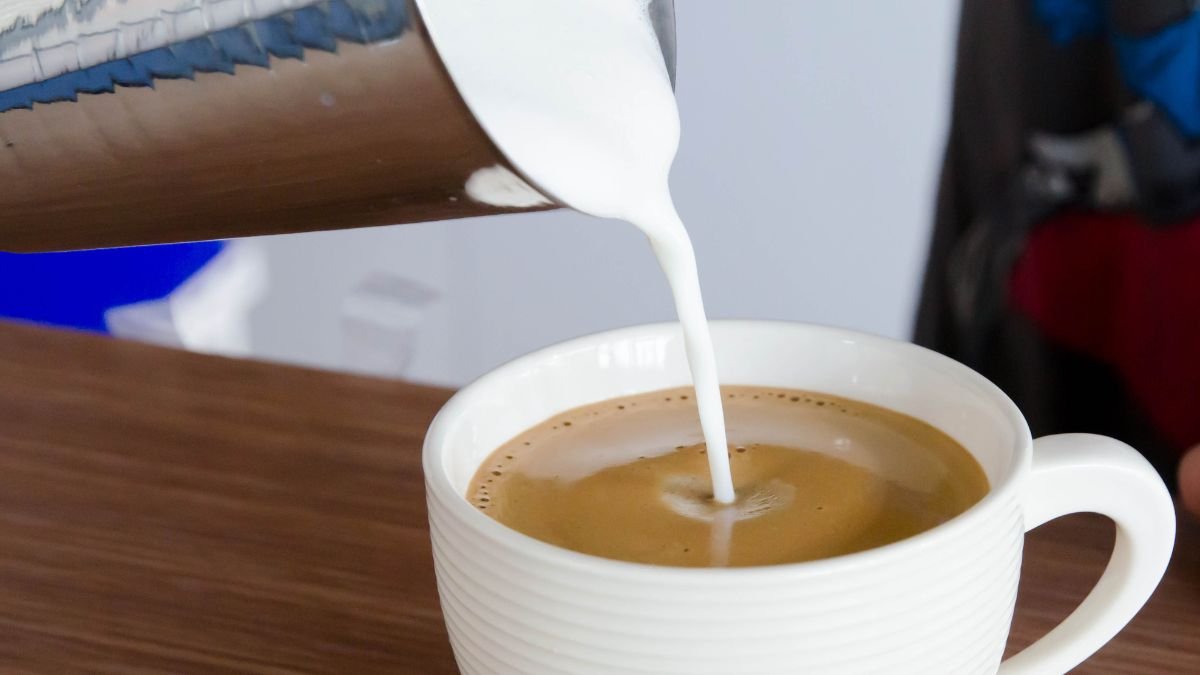A cappuccino is a classic coffee drink loved by many for its smooth, creamy texture and rich espresso base. While it may seem like an art reserved for professional baristas, making a cappuccino at home is both achievable and rewarding. With the right equipment, ingredients, and techniques, you can enjoy a perfect cappuccino in the comfort of your own kitchen.
In this article, we’ll guide you through the steps to making a cappuccino at home, from brewing espresso to frothing milk. Whether you’re a seasoned coffee enthusiast or a beginner, this guide will help you craft a café-quality cappuccino every time.
1. Understanding the Cappuccino Structure
A traditional cappuccino consists of three primary components: espresso, steamed milk, and milk foam. The key to making a great cappuccino is achieving the right balance between these elements. Typically, a cappuccino has a 1:1:1 ratio of espresso, steamed milk, and foam. The result is a creamy, well-rounded coffee drink with a rich flavor and smooth texture.
The Espresso Base
Espresso serves as the foundation of your cappuccino. A well-prepared espresso shot adds depth and intensity to the drink, setting the tone for the entire beverage. When brewed correctly, espresso should have a rich, golden-brown crema on top, which gives the cappuccino its signature richness and aroma.
The Steamed Milk
Steamed milk adds creaminess to the cappuccino without overpowering the espresso. It should be smooth and velvety, with a slight texture to enhance the mouthfeel. The key is to steam the milk to the right temperature and consistency.
The Milk Foam
The foam on top of the cappuccino is what gives it that characteristic frothy texture. The foam should be light, airy, and dense enough to hold its shape. A good cappuccino has a thick layer of foam that sits atop the espresso, creating a balanced combination of liquid and foam.
2. The Right Equipment for a Perfect Cappuccino
To make a cappuccino at home, you’ll need a few essential pieces of equipment. While there are various tools available, these are the basics that will ensure you can craft a great cappuccino.
Espresso Machine with a Steam Wand
An espresso machine is essential for brewing the espresso shot and steaming the milk. The steam wand, which is attached to most espresso machines, is used to froth the milk. Some espresso machines are more advanced than others, but even a beginner-friendly machine with a steam wand will get the job done.
If you don’t have an espresso machine, you can use a stovetop espresso maker (Moka pot) to make a concentrated shot of coffee, but it’s recommended to use an actual espresso machine for the best results.
Milk Frothing Pitcher
A milk frothing pitcher is necessary to steam the milk and create foam. Stainless steel is the best material for frothing pitchers because it helps you control the milk’s temperature and texture. Choose a pitcher that’s the right size for your needs, usually around 12-20 ounces.
Coffee Grinder
A burr grinder is essential for freshly grinding your coffee beans. Freshly ground coffee is critical to making a great espresso. A burr grinder provides a consistent grind size, which is important for a balanced espresso extraction.
Tamper
A tamper is used to compress the ground coffee in the portafilter before brewing. A good tamp ensures that the coffee is evenly packed, which helps the water flow through the grounds evenly during extraction.
3. Steps to Making the Perfect Cappuccino
Now that you have your equipment ready, let’s walk through the steps to making a cappuccino at home.
Step 1: Brew the Espresso
- Grind the Coffee: Start by grinding fresh, high-quality coffee beans. For a single espresso shot, use around 9 grams of coffee. The grind should be fine, similar to powdered sugar.
- Tamp the Grounds: Place the ground coffee into the portafilter and tamp it evenly with moderate pressure. Make sure the surface is level for a uniform extraction.
- Brew the Espresso: Lock the portafilter into the espresso machine and start the brewing process. A good shot of espresso should take about 25-30 seconds to extract. It should yield around 1 ounce (30 ml) of espresso per shot.
Step 2: Steam the Milk
- Prepare the Milk: Pour cold milk into your milk frothing pitcher. Whole milk works best for a creamy, velvety texture, but you can also use alternatives like oat milk or almond milk.
- Steam the Milk: Insert the steam wand into the milk and turn it on. Keep the wand just below the surface of the milk to introduce air. The goal is to create smooth, velvety microfoam, which is different from bubbly foam.
- Monitor the Temperature: Steam the milk to about 150°F (65°C). You should feel the side of the pitcher warm up as you steam, but avoid overheating the milk, which can make it taste burnt and alter its texture.
Step 3: Froth the Milk
The key to great milk foam is controlling the air incorporated during steaming. As the milk heats up, the steam should create tiny bubbles, resulting in a creamy texture. If you’re aiming for a traditional cappuccino, the foam should be dense and thick, with a consistency similar to shaving cream.
Step 4: Combine Espresso and Milk
- Pour the Espresso: Pour the freshly brewed espresso into a cappuccino cup. You should have a nice layer of crema on top of the espresso.
- Add Steamed Milk: Pour the steamed milk into the espresso slowly, using a spoon to hold back the foam. Once most of the milk is in the cup, spoon the foam on top, creating a thick, creamy layer.
- Create Latte Art (Optional): If you want to get creative, you can practice latte art with the milk foam. Pour the foam in a steady stream to create patterns like hearts, leaves, or rosettas.
Step 5: Serve and Enjoy
Your cappuccino is now ready to be served! A well-made cappuccino will have a rich, creamy texture with a balanced espresso flavor. The foam should be thick and velvety, with a slight sweetness from the milk.
4. Common Cappuccino Mistakes to Avoid
While making cappuccino at home can be easy, there are a few common mistakes that can ruin the experience. Here are some tips to help you avoid them:
- Overheating the Milk: Milk should be steamed to about 150°F (65°C). If it gets too hot, it will lose its sweetness and texture.
- Inconsistent Grind Size: Using an inconsistent grind size can lead to poor extraction and bitter or sour flavors. Make sure your grind size is fine and consistent.
- Under or Over-Tamping: When tamping the coffee, it’s important to apply the right amount of pressure (about 30 pounds) to create a level surface for extraction.
- Not Cleaning Your Equipment: Regularly clean your espresso machine, steam wand, and milk frothing pitcher to ensure a clean, fresh taste.
5. Tips for Perfecting Your Cappuccino
- Experiment with the Coffee-to-Milk Ratio: If you prefer a stronger coffee flavor, you can adjust the ratio of espresso to milk to suit your taste.
- Use Freshly Ground Beans: Freshly ground beans make a significant difference in the quality of your espresso shot.
- Perfect Your Steaming Technique: With practice, you’ll be able to perfect your steaming technique and create smooth, velvety milk foam.
Conclusion: The Joy of Making Cappuccino at Home
Making a cappuccino at home is a rewarding experience that allows you to enjoy café-quality coffee in the comfort of your own kitchen. By following the steps outlined in this article and practicing your technique, you’ll be able to create a rich, flavorful cappuccino that rivals those made by professional baristas.
With the right equipment, ingredients, and a little patience, you can enjoy the perfect cappuccino whenever you want. So grab your espresso machine, perfect your milk frothing technique, and start brewing!

I’m an economist with 15 years of experience in strategic planning and a lifelong passion for wellness and natural living. As a self-learner, I created Herbalife Balance to share insights on healthy eating, mindful habits, and an active lifestyle. Tennis enthusiast and nature lover, I believe in balance as a path to well-being. Through this blog, I help others live healthier, more conscious lives.

